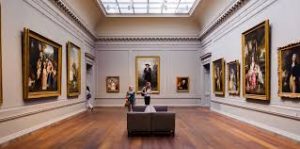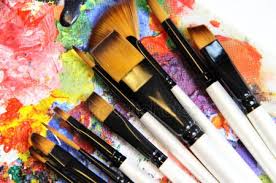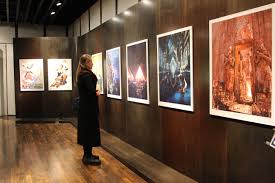PRINT. CLASSIFICATION AND VARIETIES (part 1)
 An engraving (from French estampe) is a generalized name for works of printed graphics, which is an engraving or any other print on paper from a printing form.
An engraving (from French estampe) is a generalized name for works of printed graphics, which is an engraving or any other print on paper from a printing form.
There are four types of prints: high (convex) printing, flat printing, intaglio printing and screen printing. Convex printing includes woodcut, linocut and cardboard engraving. For flat printing – lithography with all its varieties and monotype. Intaglio printing: etching, engraving, mezzo-tinto, dotted line, dry needle, aquatint, reserve, lavis, soft varnish, pencil style. Screen printing – silk screen printing.
Let us consider in more detail the main print techniques in chronological order.
Surkov Alexander. Rialto Bridge – Etching Engraving (from French gravure – cut, create relief) – a type of graphic art, implying the creation of printing forms in various ways. There are a huge number of engraving techniques: woodcut, linocut, cardboard engraving, etching, incisal engraving, mezzo-tinto, dotted line, dry needle, aquatint, reserve, lavis, soft varnish, pencil style.
Woodcut Woodcut (from Greek silo – wood) – woodcut. The technique of woodcutting originated in China. The earliest known woodcut sample dates from 868.
Until the end of the XVII century, woodcuts were done on the boards of longitudinal cut – cut (longitudinal) engraving. For edged engraving, a linden, plum or pear board is used for longitudinal cutting, the pattern is cut with cutters, chisels or a knife.
In the 1780s, the Englishman T. Buick came up with a frontal engraving. For face engraving, boards of cross cut from hard rocks of the Caucasian palm (boxwood) are used. The image is cut out with cutters of different configurations. After that, the board is coated with special paint and a print is made on paper. The number of high-quality prints from longitudinal planks is within a few hundred copies, from the front – tens of thousands of copies.
Silkscreen, serigraphy Silkscreen, serigraphy (from lat. Seri – silk and Greek. Grafia – form, image) – type of art screen printing. Silk screen printing appeared in China during the Song Dynasty (960-1279). This technology quickly spread to neighboring Asian countries. In Japan, for example, they developed this technology by combining it with woodcut and manual ink application. Silk screening appeared in Europe at the end of the 18th century, due to scarcity and high cost of silk, it was not widely used. The technology began to develop only after a high-quality and inexpensive substitute for silk was invented.
A silk screen screen template is made of silk mesh stretched over an aluminum or wooden frame. Zones without a pattern are covered with a material impenetrable to paints, resulting in a stencil. The screen is applied to the surface on which the image will be applied, then water or oil-based paint is added and a roller or squeegee is rolled with a special tool on the surface of the screen. Each color is fixed, and the print for a specific color is made separately only in those places where it is required. Unlike other printing techniques, the image is obtained in a non-mirror form. Silk screen printing allows you to get bright, colorful embossed images. Using silk-screen printing, you can print quality reproductions of paintings.
Mary Queen of Scotland Alexander Hay Ritchie – Incisor engraving of 1852. Incisor engraving, incisor is the oldest type of engraving. Cutting engraving appeared due to the technology of decorating metal products with carvings. The appearance of this type of engraving dates back to the first half of the 15th century. From the 17th century, incisor engraving gradually began to be replaced by varieties of etching techniques. Until the end of the 19th century, the prerogative of incisor engraving was the performance of geographical maps, types of cities (leading), illustrations for scientific atlases and publications, as well as reproductions of paintings, sculptures and architectural monuments for art publications. These days it is used, in particular, for printing American dollar bills.
A smooth metal plate is carefully ground, then an image contour is applied. To obtain strokes and lines, cutters-styli of various sections, sections and shapes are used, the thinnest lines are applied with needles. Metal barbs – barbs that remain at the edges, are carefully cut with a scraper. Then the image is filled with thick paint. With the help of a leather swab, the paint is easily peeled off and remains only in in-depth places. To obtain prints, relatively thick, slightly glued paper is used: it, being wet, under strong pressure absorbs paint from the recesses of the board well. The print is characterized by a strict organization of lines and a clear modeling of the shape, the image is built using parallel or oblique grid lines. This technique is exceptionally laborious and has some limited artistic possibilities.
Varlen Pen.




